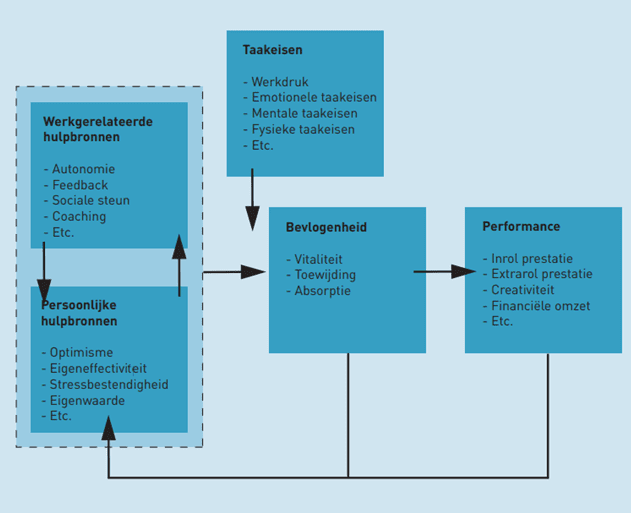Enthusiastic employees are important for an organisation; high levels of enthusiasm make for a more productive, creative and innovative organisation. This page tells you what enthusiasm entails, how an enthusiasm survey is conducted, what the benefits are and how AnalitiQs can contribute!

What is enthusiasm?
Bevlogenheid klinkt mooi, maar wat is bevlogenheid? Bevlogenheid is een positieve eigenschap van medewerkers. Bevlogen Enthusiasm sounds nice, but what exactly is enthusiasm? Enthusiasm is a positive quality of an employee. Enthusiastic employees derive satisfaction from their work and carry out their work activities with pleasure. This positive mindset brings many benefits. For example, enthusiastic employees tend to be more productive and healthier (i.e. they exhibit lower probabilities of absenteeism). This is because enthusiastic employees adopt a more proactive and more committed attitude. Enthusiasm also induces loyalty, so that employees feel less of a need to switch jobs, which benefits the organisation in the long term. Finally, high levels of enthusiasm promote a positive work atmosphere, which in turn makes the enthusiasm easier to spread to other employees. In all, enthusiastic employees add considerable value!
Enthusiasm surveys
Now that it has become clear what enthusiasm entails, it is time to explain enthusiasm surveys. That enthusiastic employees add considerable value is now clear. But how is enthusiasm measured? This is done through enthusiasm surveys.
Measuring enthusiasm
Enthusiasm is measured through an enthusiasm survey. The Utrecht Work Engagement Scale (Schaufeli & Bakker, 2006) is used to gauge enthusiasm. It roughly measures three main factors:
- Dedication: Are the employees proud of the work that they carry out, and does it inspire them? Do they derive meaning from their work and do they feel enthused and challenged by their work?
- Vitality: Do the employees have sufficient energy and resilience to achieve the company goals? Do they put in a lot of effort, do(n’t) they tire easily, and do they show perseverance when faced with obstacles?
- Absorption: Are the employees happy and cheerful when doing the work that they do? Does time pass quickly because they do their work unreluctantly?
The above factors are measured using a questionnaire that is distributed among the employees. It reveals where the organisation stands and where there is room for improvement. Note: before creating the questionnaire, ensure that the organisation is well aware of the meaning of enthusiasm! After all, creating the wrong questionnaire can lead to the wrong follow-up steps being taken.
Boosting enthusiasm
Organisations can boost enthusiasm by improving the above three main factors. How to achieve this may differ per organisation. Examples include:
- Work atmosphere: a challenging, pleasant work atmosphere furthers employee enthusiasm. Enthusiasm will increase if employees are allowed to be themselves, further develop themselves and have sufficient autonomy.
- Having a meaningful organisational culture is very important. This is a culture with which employees can identify, so that they voluntarily commit themselves to the organisation.
- Inspiring leadership leads to more commitment. Leaders who know what is topical in the organisation spark inspiration and instil trust, which in turn raises enthusiasm.
It is difficult to predict any specific areas for improvement, but most of the steering efforts generally go into the factor with the lowest score.
Enthusiasm model
All of the information about enthusiasm can be summarised in a (conceptual) enthusiasm model, cf. Figure 1. This model shows that work-related and personal resources help to create more enthusiastic employees (mediated by task requirements). The work-related resources, such as giving autonomy and feedback, can be offered through the organisation while the personal resources, such as optimism and stress resistance, will have to come from the employees themselves. Enthusiasm will boost performance, while increased enthusiasm and performance can ensure the further growth of both resources. This constitutes a self-reinforcing cycle of opportunities for improvement: if steered well, the enthusiasm will rise by itself!

Enthusiasm and commitment
The terms enthusiasm and commitment show a partial overlap. Whereas enthusiasm is mainly aimed at devotion, vitality and absorption, which allow employees to derive pleasure and energy from their job, commitment is more about having passion for the work and strong ties with the organisation. So enthusiasm is about realising the usefulness of the work that you do, while commitment puts more focus on the pleasure gained from your work. Our Employee Engagement page further explains the terms related to enthusiasm and commitment, e.g. job satisfaction, eNPS and satisfaction.
What can AnalitiQs do for you?
AnalitiQs has experience in carrying out (international) enthusiasm surveys and would be happy to help your organisation! Gotten curious about your options? Feel free to contact us without any obligation.
Interested? Feel free to contact us!

Gido van Puijenbroek
Detailed Service Overview
HR Analysis
Equal Pay
Gender mobility
Absenteeism
Employee Segmentation
Employee Retention & Attrition
Engagement
Impact Measurement / ROI
Learning & Development
Management Development
Onboarding
Organisational Network
Performance
Process Mining
Productivity
Recruitment
Restructuring / Organizational-Development
Reward
Strategic Workforce Planning
Succession Management
Employee Surveys
Culture
Employee Satisfaction
Job Satisfaction
Inclusion
Onboarding
Employee Turnover
Diversity
Employee Community / Panel
Employee Engagement
Employee Commitment
Employee Journey
Employee Net Promotor Score (eNPS)
Employee Value Proposition (EVP)
Employee Enthusiasm
Labour Market
Labour Market Panel
Labour Market Positioning
Leadership
Manager Feedback
Personal Development
Pulse
Retention
Role Clarity
Sentiment
Strategic Alignment
Team Feedback
Total Reward Optimization
Voice of the Employee (VoE)
Work from home
Work Stress
Work Pressure
Capability Building
HR Analytics Strategy
HR Analytics Product Owner
HR Analytics Outsourcing
HR Academy
HR Dashboards
Absenteeism Dashboard
Integral HR Dashboard
Leadership Dashboard
Learning Dashboard
Recruitment Dashboard
Reward Dashboard
Talent Development Dashboard
